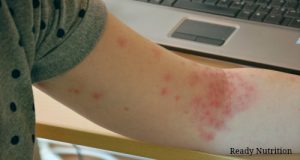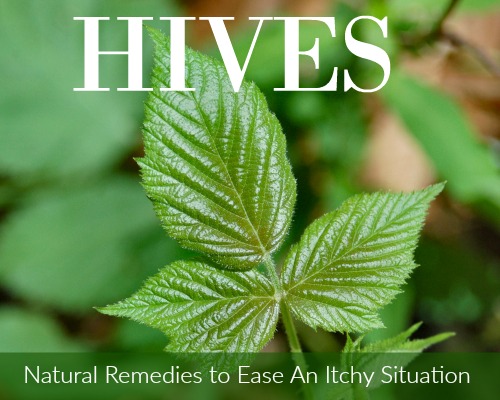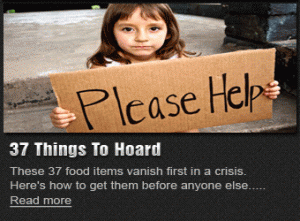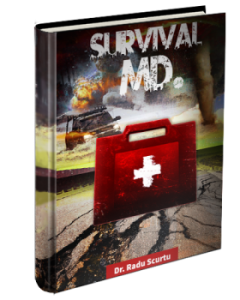A friend of mine, Steve, recently asked me, “What is the best way to deal with rashes from poison ivy?” I told him that the best way is to stay out of the poison ivy. Not only was he not satisfied with my answer, but also he asked me to do an article on skin rashes and such. Readers, this one goes out as a dedication to Steve, and if you guys and gals can’t take the initial advice I gave to him, perhaps this information will help you in your hiking and backpacking adventures!
The topic of discussion for this article is hives, and we will present some facts about hives and some measures that may help those afflicted by them. Hives are known in medical terminology as urticaria. Defined as such, urticaria consists of multiple, swollen, raised areas of the skin that itch for up to 24 hours, caused by allergens and the body’s immunoglobulin response to those actions. Hives can strike anyone, for multiple causes and reasons. To really understand how hives work, we have to understand the body’s histamine response.
Understanding How Hives Occur

Regarding these explanations, urticaria (hives) is the result, not the cause, of the allergic reaction; however, they pose the problem, albeit short-term. The actual causes are too numerous to count and can simply be expressed as being anything. Such a statement means that depending on the individual immunoglobulin response (that is unique per each individual), there is no one thing (generally) to affect all humans. When a person examines their recent activities leading up to the reaction, it is possible through process of elimination to find the actual cause. In Steve’s case, he knew that he had been in the poison ivy and didn’t need to narrow down the search so much.
The histamine response is akin to a jigsaw puzzle in terms of illustration of function, albeit an oversimplification. With an allergic reaction, the offending particle that causes it binds to a tissue receptor site. This site is the source of the production of the process regarding the immunoglobulin. The resultant irritation (the hives) stems from histamine production and the irritation of the affected tissue.
There are drugs that block these receptor-sites involved in producing histamine (basically the substance triggering the allergic response); these sites are known as H-1 (histamine) receptors. The allergen (offending irritant) triggers the histamine production. What the medications do is function as a tailor-made jigsaw puzzle piece. They “fit” into the receptor site and block the production of histamine, thereby either preventing or minimizing the allergic response, and thus eliminating or lessening the hives. Such drugs are known as antihistamines.
The greatest rule to follow is to avoid any known allergens and particles that cause such problems. One common medication that lowers the allergic reaction is benadryl (diphenhydramine HCl); it functions by blocking the production of histamine as outlined. Benadryl is available over-the-counter, and it is useful in many applications, such as bee stings and insect bites to severe allergic reactions.
Naturopathic Aids to Alleviate Symptoms
Naturopathic aids are not so readily identifiable to lower the allergic response; the focus of concentration must be placed more on palliative-supportive measures than preventing the reaction. As mentioned earlier, the reactions are case-by-case and specific to the individual afflicted. The first step is to know the things that trigger allergies…. for you, and in this manner you can avoid contact with them. Pollen-allergic individuals (in this vein) surely know it is not beneficial to walk through a field of Canadian Goldenrod. Once again, knowing yourself and exercising good common sense are the keys to good preventative health care.
Lavender (in the form of an infusion or a bath) is an excellent natural product to help soothe and cool afflicted skin. Remember, this is a supportive measure: it does not deal with the root of the problem. If you are experiencing hives, you need to determine the source of the irritation. Ask questions of yourself.
Are you being exposed to dust, soot, smoke, or particulate matter that may be irritating your skin? Are you eating different foods or using different sources for those meals? Are you using any medications that you normally do not use? Have you changed dry cleaners or laundry detergents recently? If you’ve been outdoors camping or bivouacking in the woods, what plants were you near? Are you allergic to any of them?
Number One: take action to identify the cause of the irritation (the hives).
Number Two: remove the irritant(s) or yourself from the source of the environment causing the allergic reaction
Number Three: seek professional medical help if the hives persist.
Hyssop is another cleansing herb that can be used externally to help with anything of an infective and antimicrobial nature. Make a decoction with it and use it as an astringent/body wash. The washing is most important (except, of course, if your water supply is the source of the irritation). The latter condition is known as aquagenic urticaria, in essence hives that are produced by ordinary water in contact with the skin. Washing (in most other cases) will remove the irritants from the skin and allow the hypersensitivity reactions to abate.
Remember, most urticaria lasts for 24 hours; this is a good measuring guideline for you. If it runs longer than this, it would be a good idea to visit your family doctor. Be prepared to give the doctor a rundown on your activities and where you slept (sleeping bag, tent, or “roughing” it under the stars on pine boughs). Knowing these basic first aid and skin care measures can help you in your excursions. Another thing to keep in mind: autumn brings on changes in the plants, pollen, and humidity in the air; seasonal changes and weather fluctuations can cause things that would not normally be harmful to act as allergens on you. Above all things, be safe, and enjoy the rest of the summer and your outdoor adventures!





